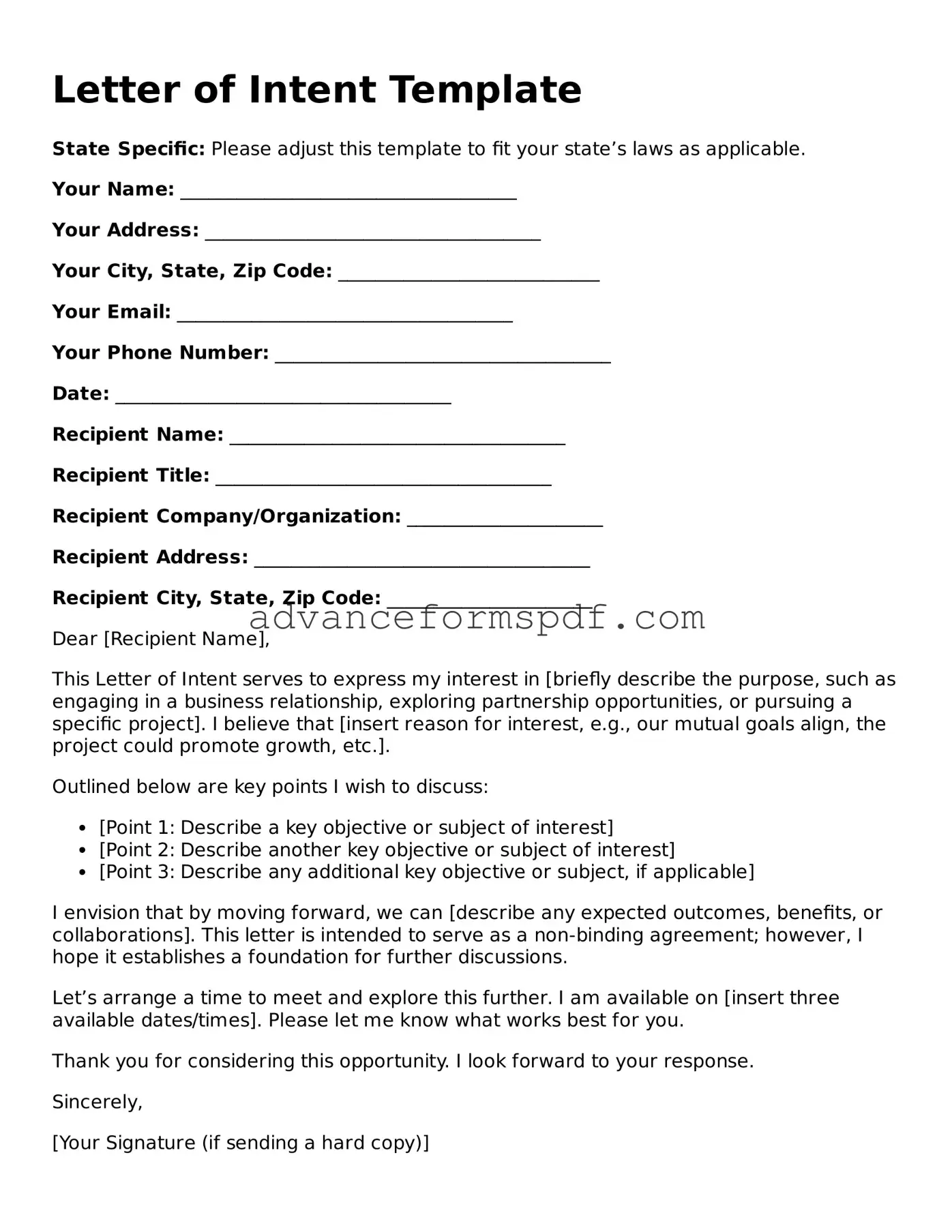Letter of Intent Template
State Specific: Please adjust this template to fit your state’s laws as applicable.
Your Name: ____________________________________
Your Address: ____________________________________
Your City, State, Zip Code: ____________________________
Your Email: ____________________________________
Your Phone Number: ____________________________________
Date: ____________________________________
Recipient Name: ____________________________________
Recipient Title: ____________________________________
Recipient Company/Organization: _____________________
Recipient Address: ____________________________________
Recipient City, State, Zip Code: ______________________
Dear [Recipient Name],
This Letter of Intent serves to express my interest in [briefly describe the purpose, such as engaging in a business relationship, exploring partnership opportunities, or pursuing a specific project]. I believe that [insert reason for interest, e.g., our mutual goals align, the project could promote growth, etc.].
Outlined below are key points I wish to discuss:
- [Point 1: Describe a key objective or subject of interest]
- [Point 2: Describe another key objective or subject of interest]
- [Point 3: Describe any additional key objective or subject, if applicable]
I envision that by moving forward, we can [describe any expected outcomes, benefits, or collaborations]. This letter is intended to serve as a non-binding agreement; however, I hope it establishes a foundation for further discussions.
Let’s arrange a time to meet and explore this further. I am available on [insert three available dates/times]. Please let me know what works best for you.
Thank you for considering this opportunity. I look forward to your response.
Sincerely,
[Your Signature (if sending a hard copy)]
[Your Printed Name]
